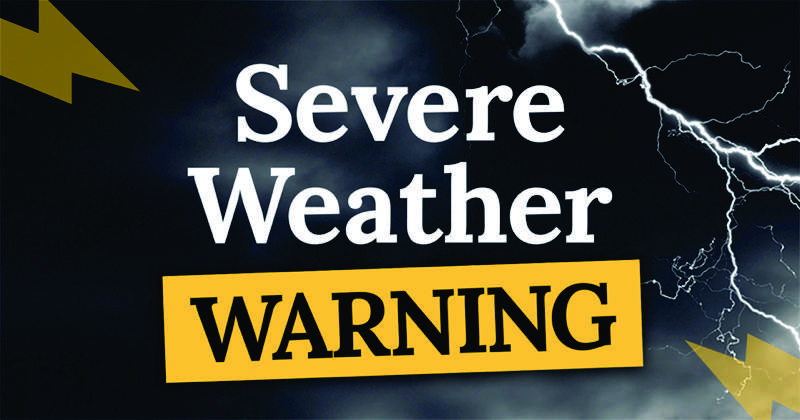Weather or not, alerts ready

Clinton
Clinton City Manager Roger Houk said the city of Clinton has a “Code Red” system for which all Clinton Residents are signed up.
It automatically sends alerts through the National Weather Service with a special message from the city. These go out to mobile devices and landlines.
You can go to the city of Clinton website (clintontn.net/) to learn more.
Oak Ridge
Oak Ridge shared a National Weather Service in Morristown post on its Facebook page that citizens have multiple ways to get warnings from weather.gov, including wireless emergency alerts and weather apps telling smart speakers to turn the alerts on, as well as local television and radio, NOAA weather radio and from friends and family.
The Oak Ridge Communications specialist Lauren Gray added that the Everbridge Alert system sends out notifications from the NWS automatically based on the location data shared with the platform.
While warning sirens exist for disasters connected to Oak Ridge’s nuclear sites, Gray said there is no warning siren that goes off for weather in general or tornadoes specifically in Oak Ridge.
Brice Kidwell, director of the Anderson County Emergency Management Agency, said this siren is the only one in the county.
Oak Ridge fire and police departments and city administrative staff “monitor the conditions with assistance from the state and NWS Morristown,” Gray added.
Anderson County
Kidwell gave other details for the county.
The agency uses the Anderson County 911 and Anderson County Sheriff’s Office applications to give out notifications.
They are available on the Google Play Store and the App Store.
“We ensure that our community has access to crucial notifications, particularly weather notifications,” Kidwell said.
“These notifications are automatically transmitted through our application as soon as the National Weather Service issues a watch or warning for Anderson County,” he said.
“Additionally, the National Weather Service employs the Integrated Public Alert and Warning System to disseminate notifications via various routes, including Wireless Emergency Alerts (received on cell phones) and the Emergency Alert System (received on television, weather radio, and AM/FM tuners),” Kidwell said.
The Emergency Operations Center at 111 S. Charles G. Seivers Blvd. has what Kidwell called “minimal staffing” personnel in a monitoring phase.
However, it keeps continuous communication with the National Weather Service and a local independent meteorologist to gain insights into current or future weather.

